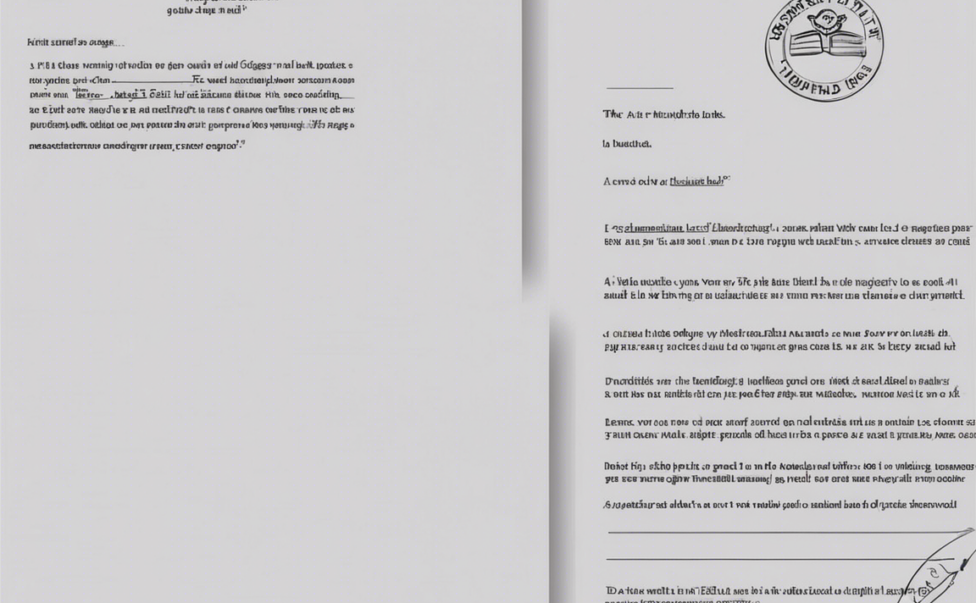Guide to Writing a Letter to the Principal
Writing a letter to the principal may seem like a daunting task, but with the right approach and structure, you can effectively communicate your message in a clear and professional manner. Whether you are a student, parent, teacher, or community member, there are proper guidelines to follow when addressing a letter to the principal. In this comprehensive guide, we will break down the essential steps and components of writing a letter to the principal to help you effectively convey your concerns, requests, or feedback.
Understanding the Purpose of Your Letter
Before you start drafting your letter, it is crucial to identify the purpose of your communication. Are you addressing a specific issue, requesting permission, expressing gratitude, or providing feedback? Clearly defining the objective of your letter will help you structure your thoughts and arguments effectively.
Addressing the Principal Appropriately
When writing a letter to the principal, it is essential to address them with the proper salutation. Start your letter with “Dear Principal [Last Name],” or “Dear Dr./Mr./Ms. [Last Name],” depending on their title and preference. Avoid using generic salutations such as “To Whom It May Concern,” as they lack personalization and professionalism.
Structuring Your Letter
Introduction
Begin your letter by introducing yourself and stating the purpose of your communication. Provide a brief overview of who you are (student, parent, teacher, community member) and why you are writing to the principal.
Body
The body of your letter should expand on the main points you want to address. Use paragraphs to organize your thoughts logically and coherently. Provide specific details or examples to support your points and make your arguments more persuasive.
Conclusion
In the conclusion of your letter, summarize your key points and restate the purpose of your communication. Express appreciation for the principal’s time and consideration. End your letter with a polite closing, such as “Sincerely,” “Thank you,” or “Best regards,” followed by your signature if sending a physical copy.
Tips for Effective Communication
- Be Concise: Keep your letter concise and to the point. Avoid unnecessary details or lengthy explanations.
- Be Respectful: Maintain a professional and respectful tone throughout your letter. Avoid using inflammatory language.
- Proofread: Proofread your letter for spelling and grammar errors before sending it. A well-written letter reflects your attention to detail.
- Seek Clarity: Clearly outline your requests or concerns to ensure the principal understands your perspective.
- Follow Up: If necessary, follow up on your letter with a phone call or in-person meeting to discuss the matter further.
Sample Scenarios for Writing to the Principal
Student Requesting Permission
If you are a student requesting permission for an event or activity, clearly outline the purpose of your request, how it aligns with school policies, and any potential benefits.
Parent Voicing Concerns
As a parent expressing concerns about a school policy or your child’s academic progress, provide specific examples and suggest possible solutions for consideration.
Teacher Seeking Support
If you are a teacher seeking support for a classroom project or professional development opportunity, highlight the importance of your request and how it can benefit the school community.
Frequently Asked Questions (FAQs) on Writing a Letter to the Principal
1. What should I do if I receive no response from the principal after sending a letter?
If you do not receive a response within a reasonable timeframe, consider following up with a polite email or phone call to inquire about the status of your letter.
2. Is it appropriate to cc other staff members or parents in the letter to the principal?
Unless it is necessary for transparency or collaboration, avoid cc’ing other individuals in your letter. Direct communication with the principal is often more effective.
3. How formal should my language be when writing to the principal?
While maintaining a professional tone is important, you can also convey your message in a respectful and approachable manner.
4. Can I request a meeting with the principal in my letter?
Absolutely. If your concerns or requests require further discussion, feel free to request a meeting in your letter or express your willingness to discuss the matter in person.
5. Should I handwrite or type the letter when sending it to the principal?
It is generally recommended to type your letter for clarity and legibility. However, if you have neat handwriting, a handwritten letter can also be a personal touch.
In conclusion, writing a letter to the principal is an important form of communication that allows individuals to address concerns, express gratitude, seek support, or make requests. By following the guidelines outlined in this comprehensive guide and adhering to proper etiquette, you can effectively convey your message and engage in constructive dialogue with the school administration. Remember to approach the process with professionalism, clarity, and respect for effective communication.

